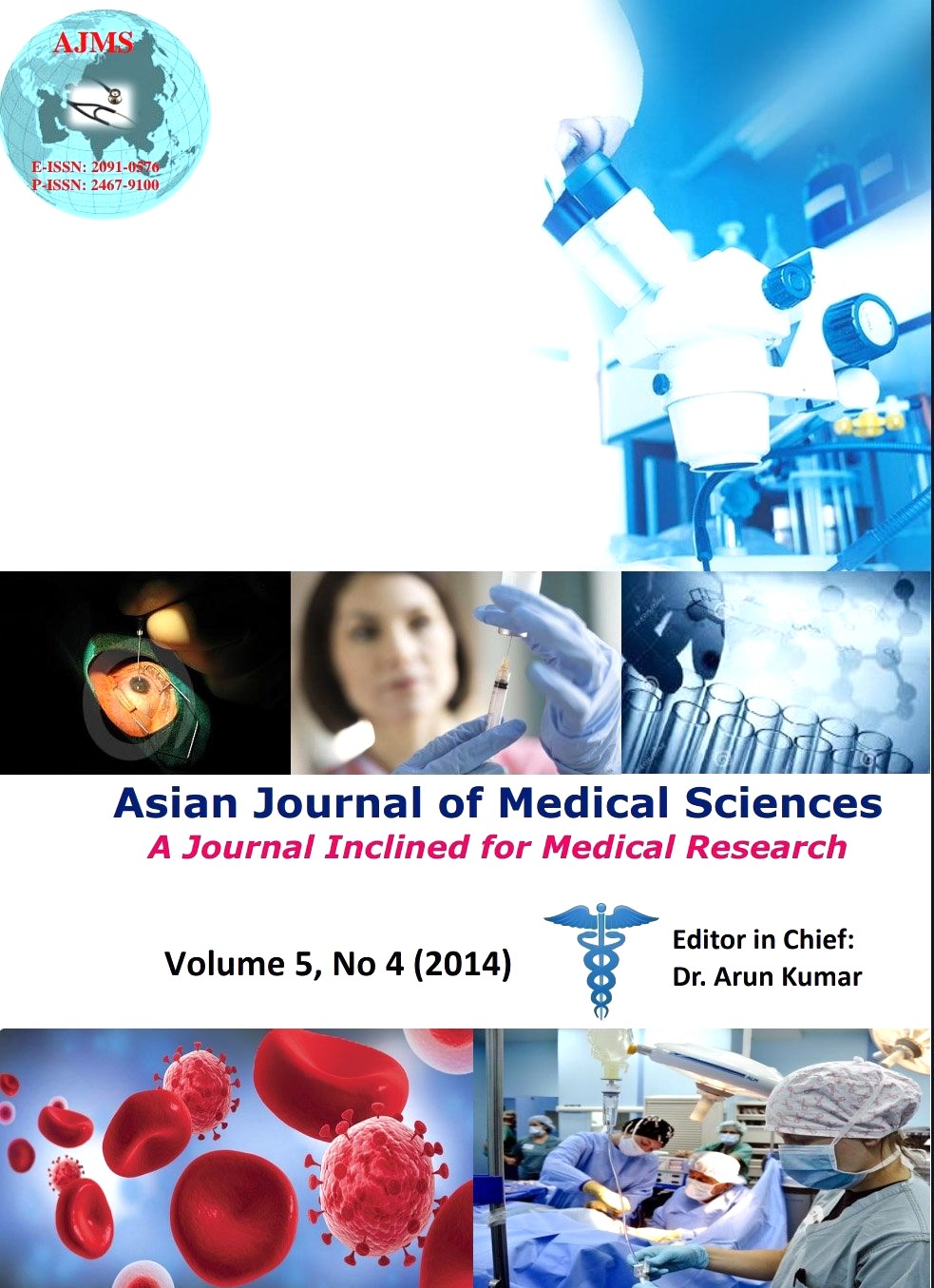Fibrodysplasia ossificans progressiva: A case report
Keywords:
Myositis ossificans progressiva, Genetic disorder, Autosomal dominant, OssificationsAbstract
Fibrodysplasia ossificans progressiva (FOP) is a genetic disorder with unknown cause. Disease is characterized by heterotopic ossifications of connective tissue and congenital malformations of distal part of extremities. Most cases are sporadic and transmitted as autosomal dominant. As very few cases of FOP are being reported in Indian literature, we, therefore, report one such case here.
Our case is a 20 years-old female patient who had bilateral short great toes with hallux valgus associated with heterotopic ossifications of connective tissue with restrictions of range of motion and disability of daily living activities. We have diagnosed it as FOP based on our physical examination and skeletal x-rays findings.
DOI: http://dx.doi.org/10.3126/ajms.v5i4.9915
Asian Journal of Medical Sciences 2014 Vol.5(4); 113-115
Downloads
Downloads
Additional Files
Published
How to Cite
Issue
Section
License
Authors who publish with this journal agree to the following terms:
- The journal holds copyright and publishes the work under a Creative Commons CC-BY-NC license that permits use, distribution and reprduction in any medium, provided the original work is properly cited and is not used for commercial purposes. The journal should be recognised as the original publisher of this work.
- Authors are able to enter into separate, additional contractual arrangements for the non-exclusive distribution of the journal's published version of the work (e.g., post it to an institutional repository or publish it in a book), with an acknowledgement of its initial publication in this journal.
- Authors are permitted and encouraged to post their work online (e.g., in institutional repositories or on their website) prior to and during the submission process, as it can lead to productive exchanges, as well as earlier and greater citation of published work (See The Effect of Open Access).




